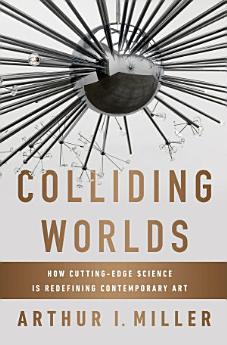Colliding Worlds: How Cutting-Edge Science Is Redefining Contemporary Art
About this ebook
Miller, the author of Einstein, Picasso and other celebrated books on science and creativity, traces the movement from its seeds a century ago—when Einstein’s theory of relativity helped shape the thinking of the Cubists—to its flowering today. Through interviews with innovative thinkers and artists across disciplines, Miller shows with verve and clarity how discoveries in biotechnology, cosmology, quantum physics, and beyond are animating the work of designers like Neri Oxman, musicians like David Toop, and the artists-in-residence at CERN’s Large Hadron Collider.
From NanoArt to Big Data, Miller reveals the extraordinary possibilities when art and science collide.
About the author
Arthur I. Miller is a professor emeritus at University College London. He has published many critically acclaimed books, including Einstein, Picasso; Empire of the Stars; and 137. He lives in London.








